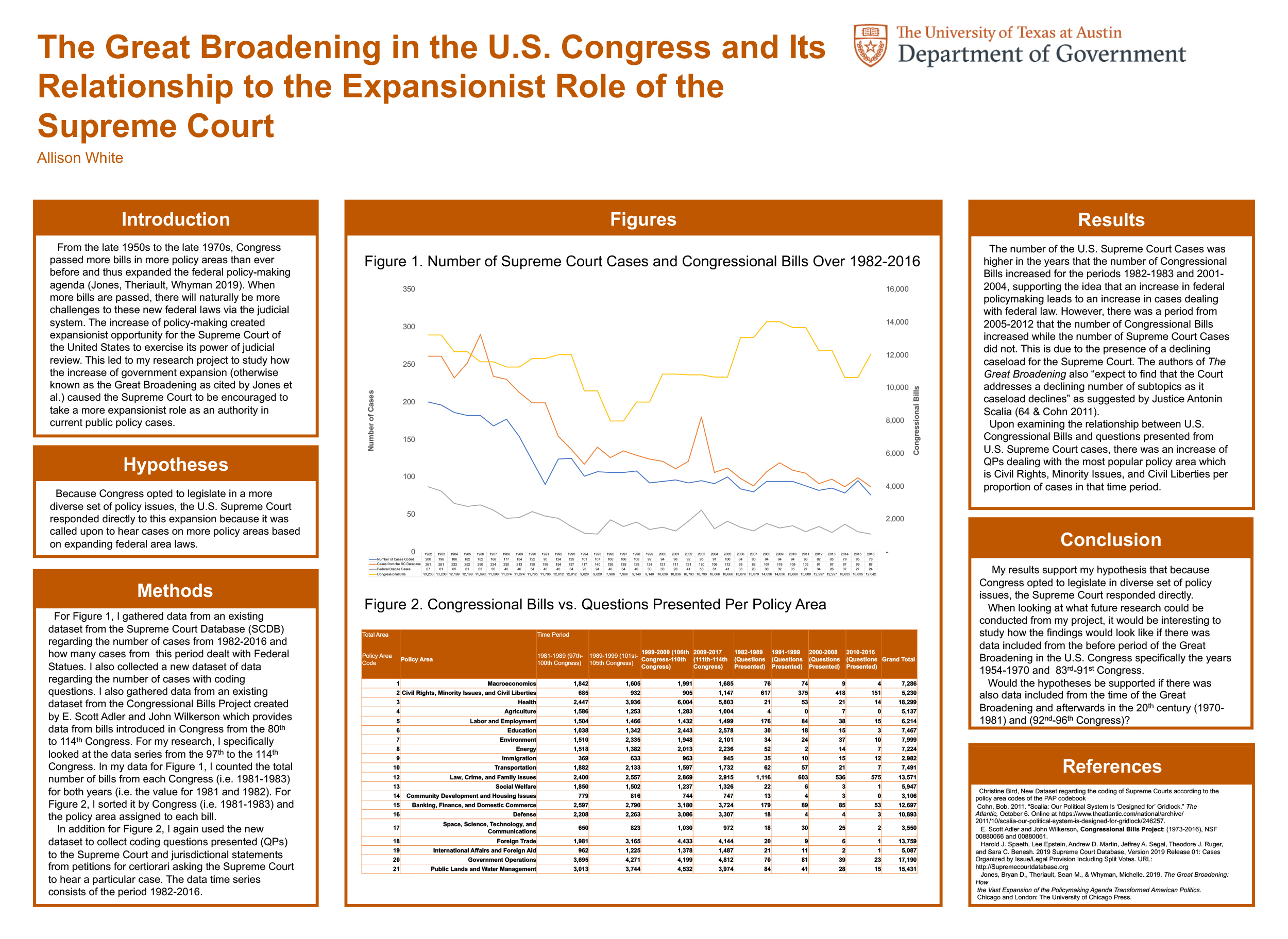Allison White
My research focuses on studying the relationship of the increase of the government expansion in U.S. Congress in the 1970s which is otherwise known as the Great Broadening and the expansionist role of the U.S. Supreme Court in public policy cases after this era. The time period spans from 1982-2016 to include the period after the Great Broadening. Specifically my research centers around studying the question of how the Supreme Court’s institutional policy changed due to the increase of policymaking in Congress due to the Great Broadening in the latter half of the twentieth century. Based on the literature and predictions of the authors of The Great Broadening and writer Bob Cohen regarding Justice Scalia, I formed my hypothesis that because the Congress opted to legislate in a more diverse set of policy issues, the Supreme Court responded directly to this expansion because it was called upon to hear cases on more policy areas based on expanding federal law. I tested this hypothesis by collecting data on questions presented (QPs) and jurisdictional statements from petitions for certiorari and coding it to a policy area according to the Topic Codebook by the U.S. Policy Agendas Project. I also gathered data from the Congressional Bills Project from the 97th through the 114th Congress and data from the Supreme Court Database from 1982-2016. An increase of Congressional Bills in policy areas along with an increase of federal question petitions for certiorari in the same policy areas indicates evidence of a relationship between Congress’s diversification of its agenda and the Supreme Court’s expansionist role in public policy cases during this time period. Therefore, I found a relationship between the Great Broadening in the U.S. Congress and the expansionist role of the U.S. Supreme Court.

Comments
Given the fixed size of the Supreme Court, is there a ceiling as to the maximum number of cases they can hear in a given year? I wonder if any such ceiling effect might matter for your hypothesis. —Rob Reichle
That’s a very interesting question. Typically the Supreme Court only hears a small fraction of the more than the 7,000 cases it is asked to hear each year. There isn’t a maximum number set in place, but conditions such as the number of justices on the court at the time and the policy of the case play a factor in how many cases are chosen to be heard. Furthermore, the rule that four justices must agree to hear the case also does play a factor as well. I do think this effect does matter for my hypothesis. It shows that the Supreme Court does receive more cases than it chooses to hear in a single year and also that the cases selected are those of particular interest to the justices. If the justices choose to hear one in policy areas, their ruling is setting a precedent and/or standard for future cases in that area. —Allison White

